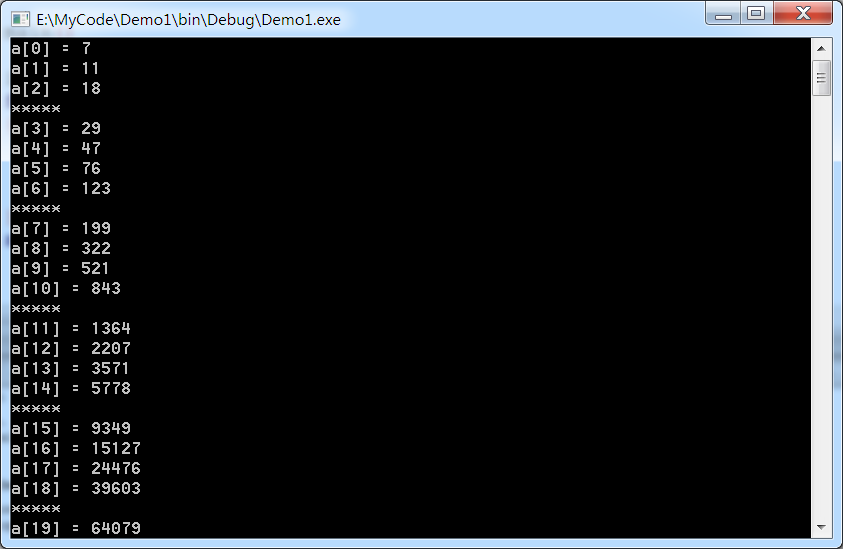逐渐发现找规律的美妙之处啦,真不错,用普通方法解决很久或者很麻烦的问题,找到规律就很方便,算法最主要还是思想
Description
There are another kind of Fibonacci numbers: F(0) = 7, F(1) = 11, F(n) = F(n-1) + F(n-2) (n>=2).
Input
Input consists of a sequence of lines, each containing an integer n. (n < 1,000,000).
Output
Print the word "yes" if 3 divide evenly into F(n).
Print the word "no" if not.
Print the word "no" if not.
Sample Input
0
1
2
3
4
5
Sample Output
no
no
yes
no
no
no
问题描述:
对于以7, 11,为f(0)和f(1)的斐波那契数列,f(n) = f(n-1) + f(n-2);
输入项数n,问第n项是否能被三整除
这样一个斐波那契数列很大很大,特别是测试项数还比较多,用大数存储也能做,但是比较麻烦,可以打表找规律
打表代码:
#include <stdio.h> long long a[100]; void init() { a[0] = 7; a[1] = 11; for(int i = 2; i < 100; i++) { a[i] = a[i-1]+a[i-2]; } } int main() { init(); for(int i = 0; i < 100; i++) { printf("a[%d] = %lld ", i, a[i]); if(a[i] % 3 == 0) printf("***** "); } return 0; }

发现每四项有一个满足要求的,所以代码如下:
#include <stdio.h> int main() { long long n; while(scanf("%lld", &n)!= EOF) { if(n % 4 == 2) printf("yes "); else printf("no "); } return 0; }